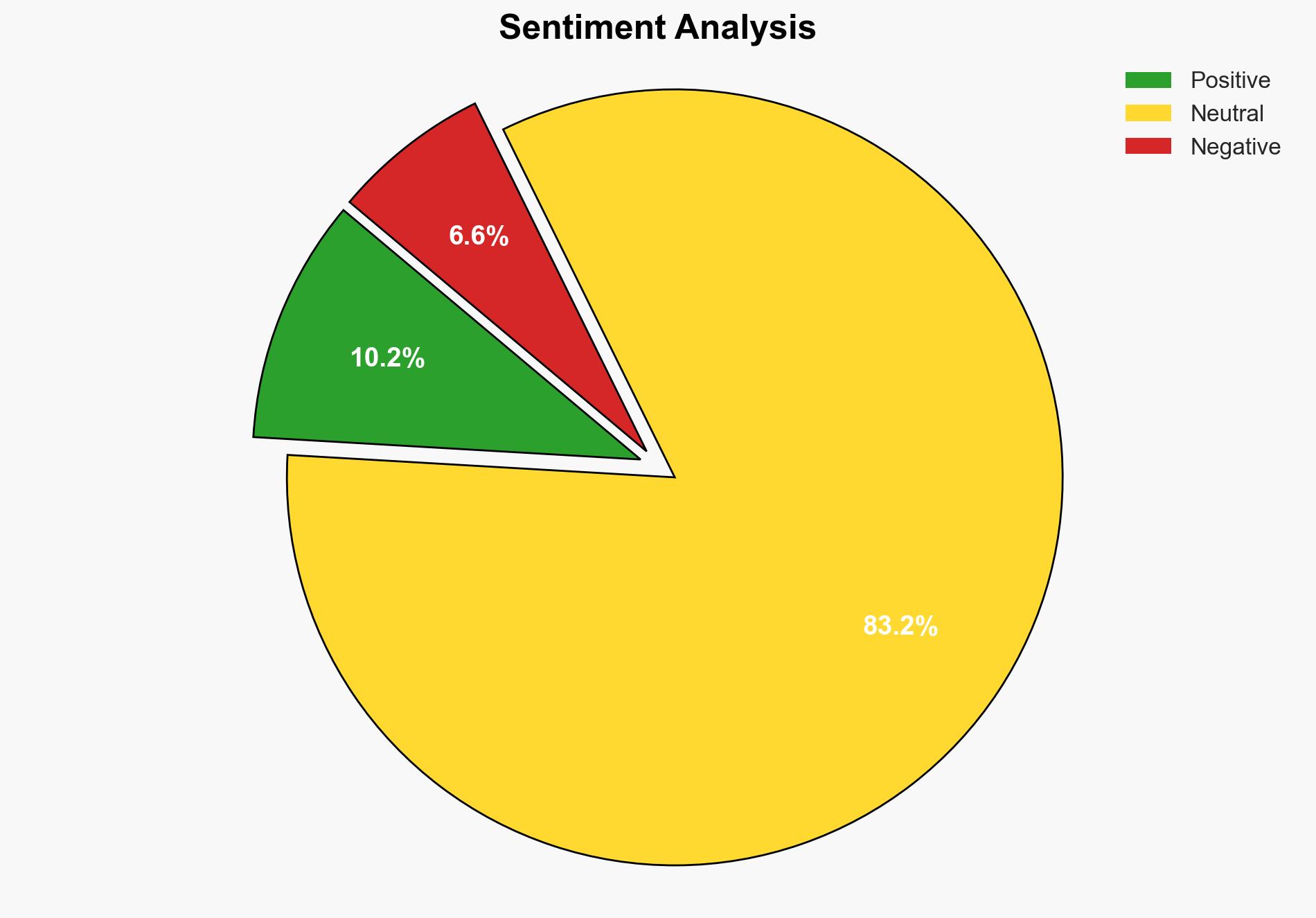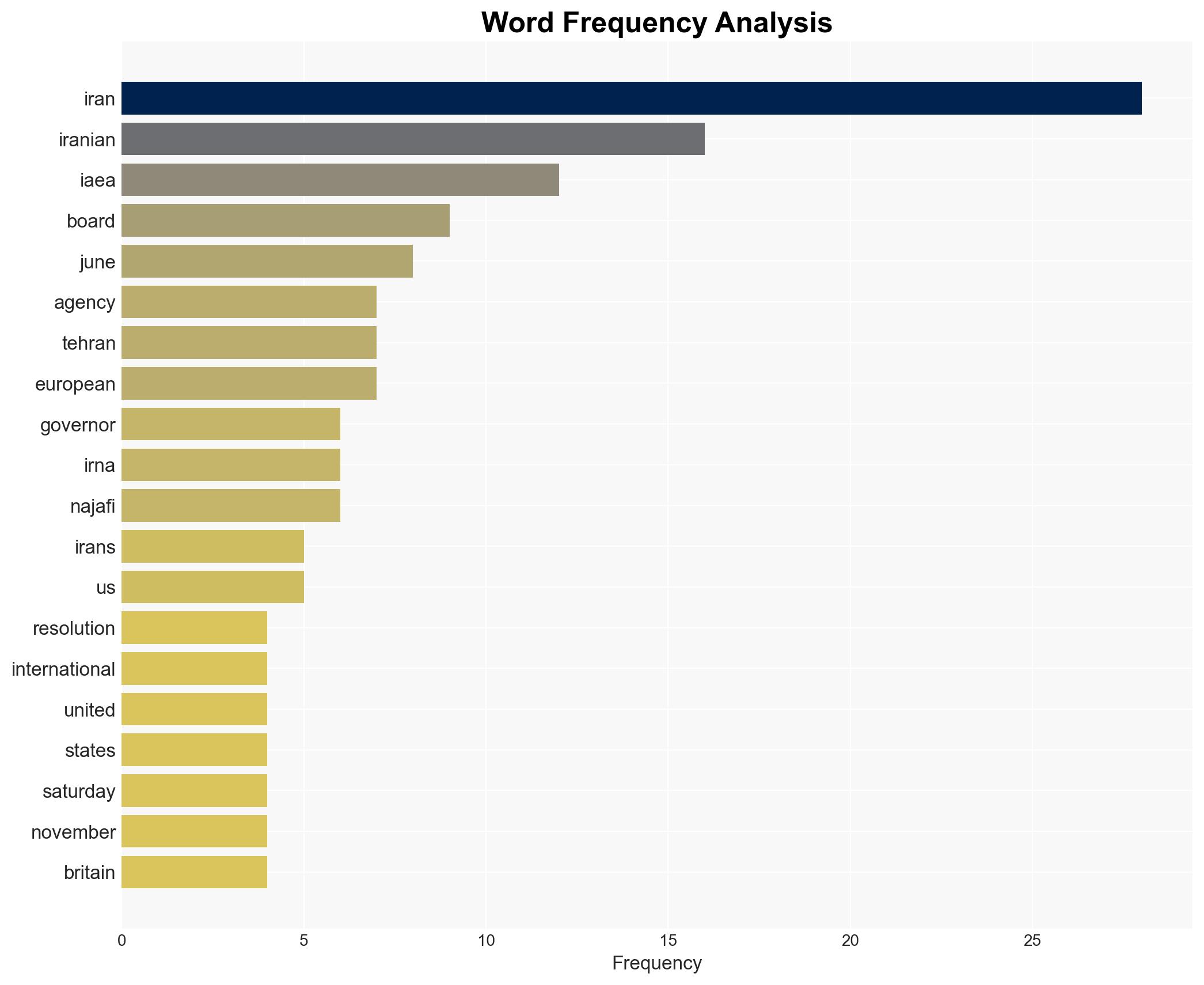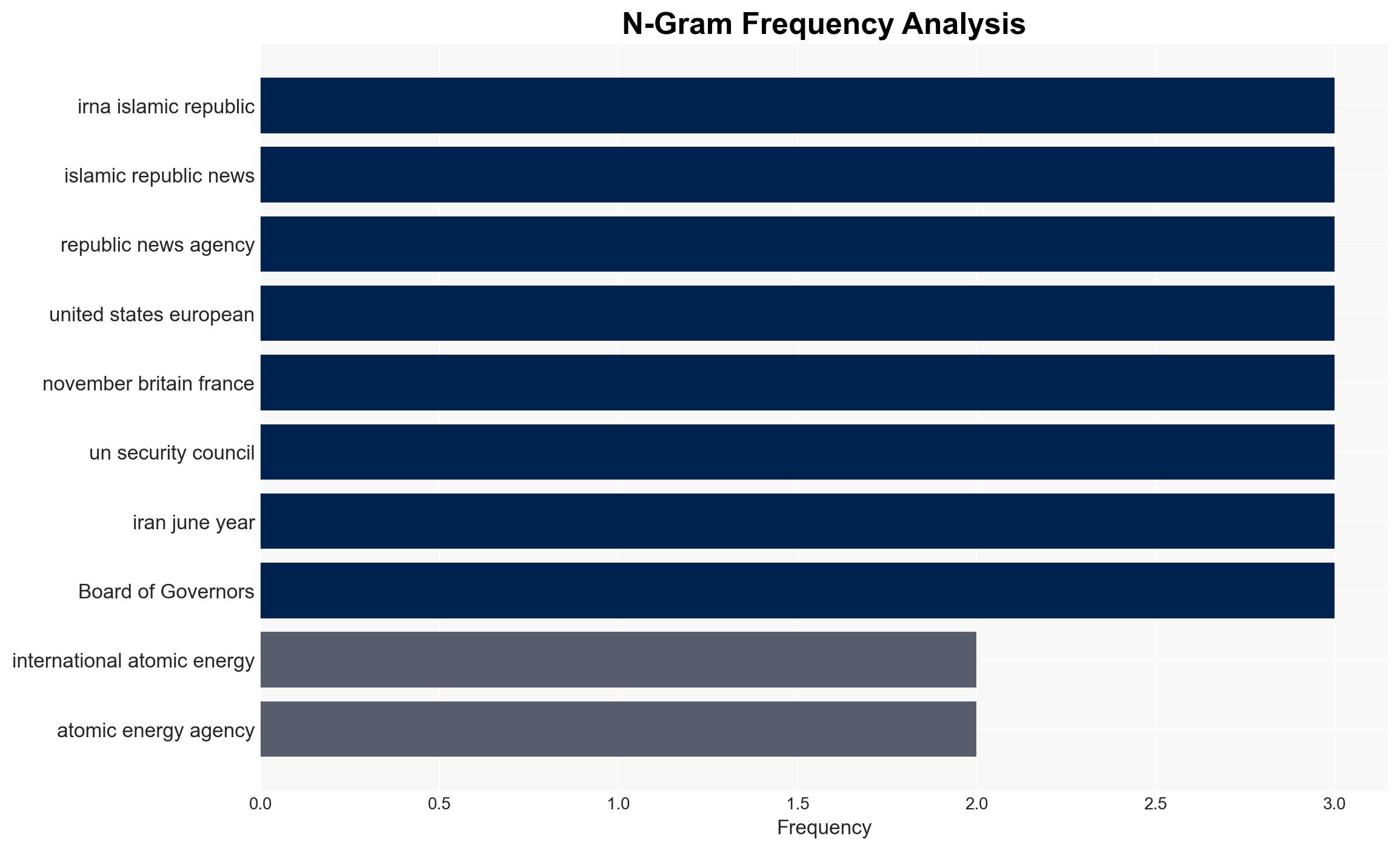Board of Governors’ resolution won’t change Iran’s safeguards status Iranian envoy – Globalsecurity.org
Published on: 2025-11-16
AI-powered OSINT brief from verified open sources. Automated NLP signal extraction with human verification. See our Methodology and Why WorldWideWatchers.
Intelligence Report:
1. BLUF (Bottom Line Up Front)
The most supported hypothesis is that the resolution by the IAEA Board of Governors will not lead to a significant change in Iran’s safeguards status due to Iran’s strategic positioning and diplomatic maneuvers. Confidence level: Moderate. Recommended action: Engage in diplomatic dialogue to de-escalate tensions and explore avenues for constructive engagement with Iran to ensure compliance with international nuclear safeguards.
2. Competing Hypotheses
Hypothesis 1: The resolution will not alter Iran’s safeguards status, as Iran will continue to resist external pressures and maintain its current nuclear posture. This is supported by Iran’s historical resilience against international pressure and its strategic alliances.
Hypothesis 2: The resolution will lead to increased scrutiny and potential changes in Iran’s safeguards status, as international pressure mounts and diplomatic efforts intensify. This is less supported due to Iran’s firm stance and the lack of consensus among international actors.
3. Key Assumptions and Red Flags
Assumptions: Iran will prioritize national sovereignty and resist external pressures. The international community will remain divided on how to address Iran’s nuclear program.
Red Flags: Iran’s rhetoric may be a strategic ploy to buy time or gain leverage. The potential for misinformation or propaganda from both Iran and opposing states could skew perceptions.
4. Implications and Strategic Risks
The resolution could exacerbate tensions between Iran and the international community, potentially leading to diplomatic standoffs or economic sanctions. There is a risk of escalation into cyber or military confrontations, particularly if Iran perceives the resolution as a direct threat to its sovereignty.
5. Recommendations and Outlook
- Engage in multilateral diplomatic efforts to encourage Iran’s compliance with IAEA safeguards.
- Monitor for signs of escalation or changes in Iran’s nuclear activities.
- Best-case scenario: Iran agrees to enhanced inspections and transparency measures.
- Worst-case scenario: Escalation into military conflict or severe economic sanctions.
- Most-likely scenario: Continued diplomatic stalemate with periodic negotiations.
6. Key Individuals and Entities
Reza Najafi – Iran’s Permanent Representative to the IAEA.
IAEA Board of Governors – Key decision-making body in nuclear oversight.
United States, Britain, France, Germany (E3) – Major international actors involved in the resolution.
7. Thematic Tags
Cybersecurity, Diplomacy, Nuclear Non-Proliferation, International Relations, Middle East Politics
Structured Analytic Techniques Applied
- Adversarial Threat Simulation: Model and simulate actions of cyber adversaries to anticipate vulnerabilities and improve resilience.
- Indicators Development: Detect and monitor behavioral or technical anomalies across systems for early threat detection.
- Bayesian Scenario Modeling: Quantify uncertainty and predict cyberattack pathways using probabilistic inference.
Explore more:
Cybersecurity Briefs ·
Daily Summary ·
Support us
·





